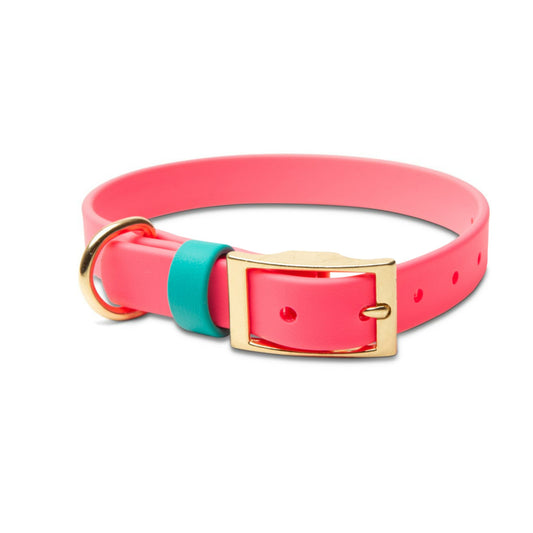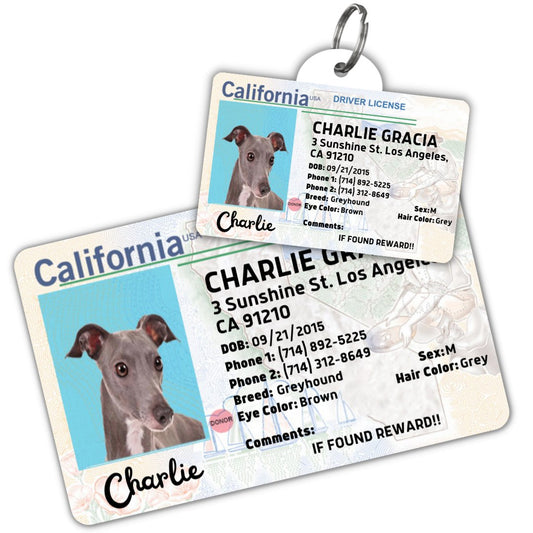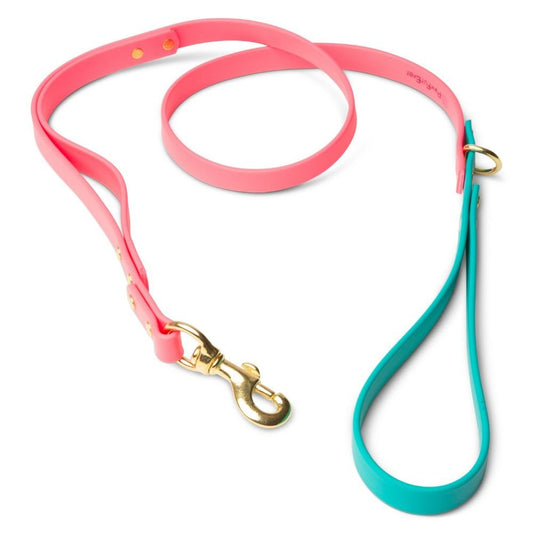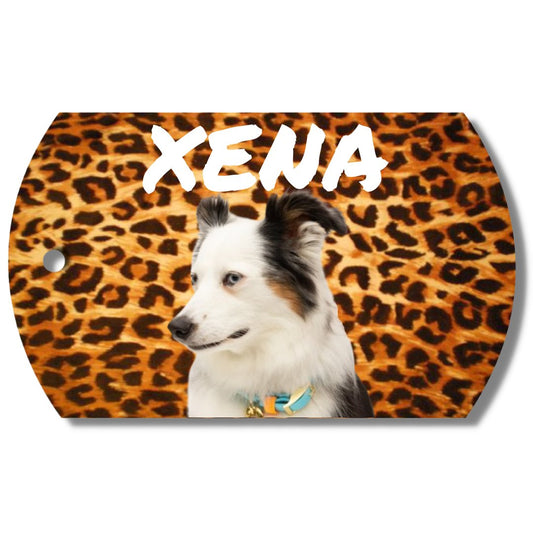
The Complete Guide to Choosing the Perfect Custom Dog Tag
Every responsible pet owner understands that a dog's identification tag serves as their voice when they cannot speak for themselves. Yet choosing the right custom dog tags involves far more than simply stamping a phone number onto metal. The perfect tag balances critical safety functions with durability, readability, and personal expression that celebrates your dog's unique identity. With countless options flooding the market, from cheap printed tags that fade within months to premium, customized dog tags built to last a lifetime, understanding what truly matters in tag selection ensures your investment effectively protects your beloved companion while reflecting the care and thought you put into their well-being.
The stakes are higher than many pet owners realize. Statistics reveal that approximately one in three pets will become lost during their lifetime, and identification tags dramatically increase reunion rates. Dogs wearing clearly readable ID tags return home far more quickly than those relying solely on microchips, which require special scanners. Yet not all tags deliver equal performance—cheap options fail exactly when you need them most, while quality engraved dog tags from manufacturers like PawFurEver provide reliable identification that withstands years of active dog life. Understanding the factors that distinguish superior tags from inferior alternatives empowers you to make decisions that could literally save your dog's life.
Understanding Tag Material Options
The material you select for your dog's ID tag determines durability, readability, longevity, and maintenance requirements. Each material offers distinct advantages and limitations worth understanding before purchasing.
Stainless Steel: The Durability Champion
Stainless steel represents the gold standard for engraved dog ID tags. This material resists rust, corrosion, and tarnishing even with constant exposure to moisture, making it ideal for dogs who swim, play in rain, or live in humid climates. The metal's hardness allows deep engraving, ensuring text remains clearly visible through years of wear.
Quality manufacturers like PawFurEver use stainless steel for their custom dog tags because the material's longevity matches their commitment to creating tags that serve dogs throughout their lifetimes. The investment in stainless steel pays dividends through extended lifespan and consistent performance regardless of conditions.
Brass and Aluminum: Budget Alternatives
Brass offers warm, attractive coloring but requires more maintenance than stainless steel. The material tarnishes over time, and softness means engraving wears away faster with constant contact and abrasion. For dogs with active outdoor lifestyles, brass is less ideal than harder metals.
Aluminum provides lightweight options suitable for small dogs but sacrifices durability. The soft metal accepts engraving readily but also wears away more quickly. Deep engraving helps extend the aluminum tag's lifespan, though it still cannot match stainless steel's longevity.
Plastic and Coated Tags: Temporary Solutions
Plastic tags or metal tags with plastic coatings offer inexpensive alternatives and vibrant color options. However, these materials crack, fade, and deteriorate relatively quickly. While acceptable as temporary solutions or backup tags, they shouldn't serve as your dog's primary identification.
The coatings on these tags also obscure engraving over time as they wear unevenly. What starts readable becomes illegible within months, defeating the tag's fundamental purpose.
Deep Engraving vs. Surface Printing

How information appears on your custom dog tags matters as much as the material itself. The distinction between deep engraving and surface-level printing or etching dramatically affects long-term readability.
The Power of Deep Engraving
Deep engraving uses laser or rotary engraving machines to cut information significantly into the metal surface. This creates text that remains clearly visible even after years of wear because the engraving depth exceeds the rate of surface abrasion.
PawFurEver's commitment to quality engraved dog tags means using deep engraving techniques that ensure your investment remains functional throughout your dog's lifetime. The deeply etched letters catch light, creating shadows that enhance visibility in various lighting conditions while resisting the wear that makes shallow engraving illegible.
Problems with Surface-Level Alternatives
Printed tags use ink or paint applied to metal surfaces. These fade rapidly with sun exposure and wash away with repeated moisture contact. Within weeks or months, printed information becomes difficult or impossible to read, exactly when you might need it most.
Shallow laser etching or chemical etching creates marks on metal surfaces without significant depth. While initially clear, these marks wear away as the tag surface experiences normal abrasion from contact with collars, fur, and environmental elements. After several months of active use, shallow engraving often becomes illegible.
Essential Information: What to Include
Determining what information belongs on customized dog tags requires balancing comprehensiveness with readability. Overcrowding creates illegible text, while too little information might not provide adequate contact methods.
The Non-Negotiables
Your Phone Number: This is the single most critical piece of information. A finder can call you immediately, enabling instant communication and a rapid reunion. Use a number you answer reliably—typically your cell phone.
Dog's Name: Including your dog's name helps finders establish rapport with nervous lost pets. Dogs respond better to people calling them by name rather than generic terms like "puppy" or "dog." However, some trainers suggest omitting names for security reasons—if strangers can call your dog by name, they might be more easily lured away.
Valuable Additional Information
Secondary Contact Number: A backup number—such as a spouse, family member, or trusted friend—provides redundancy if you're unreachable. This could mean the difference between a quick reunion and an extended separation.
Address: Your street address helps if someone prefers returning your dog directly rather than calling first. This is particularly valuable in close-knit neighborhoods where community members might recognize your address.
"Microchipped" Note: A brief indication that your dog is microchipped provides additional verification and encourages finders to take your dog to veterinary clinics or shelters where scanning occurs.
Information to Avoid
Full Names: Your full name isn't necessary and takes up valuable space. First name or just "Owner" suffices.
Overly Personal Details: Avoid including information that could compromise your security or invite unwanted interaction.
Cute Messages: While tempting to add phrases like "If you can read this, I'm lost," these consume space better used for contact information. Keep tags focused on their practical purpose.
Shape and Size Considerations
Custom dog tags come in countless shapes and sizes, each affecting both aesthetics and functionality.
Traditional Shapes
Round/Circle Tags: Classic circular tags provide maximum engraving surface area while avoiding corners that might catch or snag. The familiar shape makes them universally recognizable as ID tags.
Bone-Shaped Tags: The paw dog tag concept extends to bone shapes that clearly identify the item as pet-related. These fun shapes add personality while serving practical purposes.
Heart Tags: Heart-shaped tags express your love for your pet while providing ample engraving space for essential information.
Size Matching Your Dog
Properly sized tags balance visibility and comfort. Tags that are too large can become cumbersome and uncomfortable, particularly for small dogs. Oversized tags can bang against food bowls, snag on objects, or simply irritate dogs during movement.
Conversely, tiny tags on large dogs become difficult to spot and read. Someone finding your Great Dane shouldn't struggle to locate a tag barely larger than a dime hidden in thick fur.
General guidelines suggest:
-
Small dogs (under 20 lbs): Tags 0.75-1 inch diameter
-
Medium dogs (20-60 lbs): Tags 1-1.25 inches in diameter
-
Large dogs (60+ lbs): Tags 1.25-1.5 inches in diameter
Customization Options That Matter
Beyond basic information, you can customize your tags with options that create truly personalized tags reflecting your dog's identity.
Color Choices
While stainless steel's natural silver finish works beautifully, colored metal finishes—gold-tone, rose gold, black, or vibrant colors, add personality. Ensure colors don't compromise readability. Dark engraving on light backgrounds or light engraving on dark backgrounds provides optimal contrast.
Graphics and Symbols
Many custom dog tags allow you to add small graphics, paw prints, hearts, stars, or bones. These decorative elements personalize tags without overwhelming essential text. Keep graphics small and position them so they don't interfere with information readability.
PawFurEver's customization options let you balance personality expression with practical functionality, ensuring your dog's tag is both distinctive and compelling.
Font Selection
Choose clear, simple fonts that remain easily readable at small sizes. Avoid ornate scripts or decorative fonts that might look attractive in large format but become illegible when engraved in small format. Sans-serif fonts (without decorative strokes) typically provide the best readability on metal tags.
Attachment Methods and Hardware
Even perfect tags fail if attachment hardware breaks or tags fall off collars.
Split Rings: The Standard
Most tags come with split rings, miniature versions of key rings. Quality split rings made from stainless steel or durable metal resist opening and provide secure attachment. Check that the ring diameter matches your collar's D-ring size; too-small rings won't fit, while oversized ones snag easily.
S-Hooks
S-hooks offer easier attachment and removal than split rings, making them convenient when switching tags between collars frequently. However, they require proper pliers closure to prevent accidental opening.
Tag Silencers
Multiple tags on collars create a constant jingling that disturbs household peace and your dog's rest. Tag silencers, small rubber or silicone devices, hold tags in quiet stacks while keeping information accessible. This organizational tool dramatically improves the quality of life in multi-tag situations.
Special Considerations for Different Lifestyles
Your dog's lifestyle and activities should influence tag selection.
Water-Loving Dogs
Dogs who swim frequently need tags that resist corrosion from chlorine, salt water, and constant moisture. Stainless steel quality engraved dog tags handle these conditions perfectly. Ensure attachment hardware is equally rust-resistant.
Outdoor Adventure Dogs
Dogs hiking rough terrain, exploring forests, or engaging in vigorous outdoor play need extremely durable tags that resist impacts and abrasion. Deep engraving ensures text remains visible even if tag surfaces experience scratches from rocks or branches.
Show Dogs and Working Dogs
Dogs participating in competitions or working roles may require identification to be removed during events. Having multiple tags, one for everyday wear and one for special activities, ensures appropriate identification always exists without interfering with performance.
Maintenance and Replacement
Even high-quality engraved dog tags require occasional attention to ensure continued functionality.
Regular Inspection
Monthly, remove your dog's collar and inspect tags closely:
-
Can you read all the information clearly?
-
Is attachment hardware secure without sharp edges?
-
Does the tag show excessive wear requiring replacement?
Cleaning for Clarity
Clean tags quarterly using warm water, mild soap, and a soft brush. This removes accumulated dirt, oils, and grime that can obscure engraved text. Dry thoroughly before reattaching.
When to Replace
Replace tags immediately if:
-
Contact information changes (new phone number, address, etc.)
-
Engraving becomes difficult to read
-
Metal shows cracks or structural damage
-
Attachment points weaken
Quality engraved dog tags from PawFurEver typically last 5-10+ years before wear necessitates replacement, far outlasting cheaper alternatives requiring annual replacement.
The PawFurEver Quality Difference
When investing in custom dog tags, manufacturer quality dramatically affects performance and longevity. PawFurEver's commitment to deep engraving, quality materials, and thoughtful design creates tags that reliably serve your dog for years.
Their customized dog tags balance personalization options with practical functionality. You can express your dog's personality while ensuring the tag fulfills its critical safety purpose. The use of stainless steel and professional engraving techniques means your investment continues to protect your dog throughout their lifetime, rather than failing after months like inferior alternatives.
By choosing quality manufacturers who understand what pet owners genuinely need, you ensure your dog wears identification worthy of the importance they hold in your life.
Conclusion
Choosing the perfect custom dog tags requires more than selecting attractive designs; it demands understanding materials, engraving quality, information prioritization, and durability considerations that distinguish superior tags from inadequate alternatives. Your dog's tag literally gives them a voice when separated from you, making this small investment one of the most important decisions in responsible pet ownership.
Quality engraved dog tags from manufacturers like PawFurEver provide peace of mind that your dog wears reliable, readable, durable identification that could save their life. When you combine thoughtful selection of information with quality materials and deep engraving, you create identification that protects your beloved companion while reflecting the care and love they deserve.
Frequently Asked Questions
1. What information is most important to put on custom dog tags?
Your phone number is the single most critical information; it enables immediate contact for a quick reunion. Include your dog's name (helps calm nervous lost pets), and add a secondary contact number if space allows. An address is helpful but optional. Prioritize contact methods over decorative text or lengthy messages.
2. How long do quality engraved dog tags last?
Quality engraved dog tags made from stainless steel with deep engraving typically last 5-10+ years with regular use. PawFurEver's deep engraving resists wear far better than surface-etched or printed tags that fade within 6-12 months. Replace tags when information changes or engraving becomes challenging to read.
3. What's the difference between engraved and printed dog tags?
Engraved tags use lasers or rotary tools to cut information into metal, creating permanent text that lasts for years. Printed tags use ink/paint on metal surfaces that fade rapidly (weeks to months) from sun and moisture exposure. Deep-engraved customized dog tags maintain readability throughout your dog's lifetime.
4. What size tag should I get for my dog?
Choose tags based on your dog's size: small dogs (under 20 lbs) need 0.75-1 inch tags, medium dogs (20-60 lbs) need 1-1.25 inch tags, and large dogs (60+ lbs) need 1.25-1.5 inch tags. Properly sized tags balance visibility and comfort without being cumbersome or too small to read easily.
5. Can I put my dog's photo on a custom dog tag?
Some manufacturers offer photo tags, but engraved dog ID tags with text typically provide better long-term readability and durability. Photos can fade or become obscured with wear. If you want photo identification, consider photo tags as supplementary to traditional engraved tags with contact information, not as replacements.





